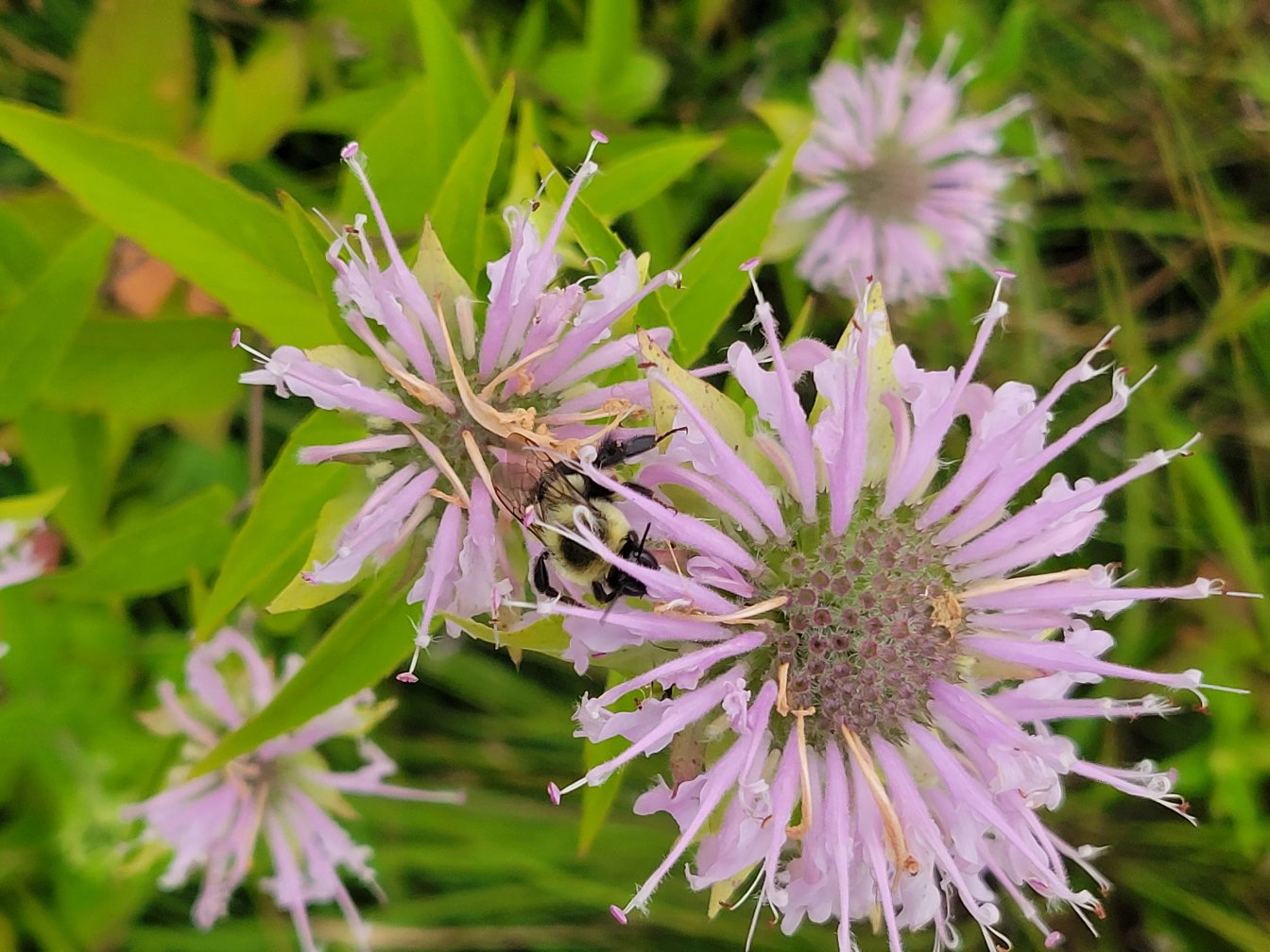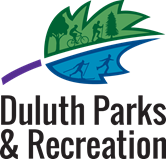Land Management
Forested Natural Areas

Project: Amity Forest/Downer Park - Ash Stand Replacement and Buckthorn Removal
Partner: City-led
Timeline: This project will begin in early January 2025. Trail access will be closed temporarily during this time. Smoke will be visible and chainsaws will be used during this time as part of the restoration work.
Description: Using grant funding from a Conservation Partners Legacy Grant, contractors will be restoring a small area of the Amity Creek forest. The City recently acquired this area north of Park Hill Cemetery and hired a consultant to prepare a Native Plant Community Report. This report describes the plant communities found in the area and provides suggestions for managing the site in order to restore the forest community and protect Amity Creek. This report can be found here.
This project involves the following activities:
1.) Cutting approximately 100 ash trees that have died due to Emerald Ash Borer.
2.) Using winter burn piles to burn the dead Ash.
3.) Planting native tree species including Yellow Birch, River Birch, and Swamp White Oak. The Natural Resources Management Program will use this site to gauge the success of species that could best emulate the ecosystem services we will be losing with the loss of our Ash stands. Emerald Ash Borer is present in Duluth, and Ash mortality is nearly 100% once a stand is infested.
4.) Removing buckthorn.
Project: Tree Planting in Mission Creek and Amity Creek Watersheds
Partner: The Nature Conservancy
Timeline: 2024, 2025
Description: The Nature Conservancy planted approximately 100 trees, yellow birch, red oak, and white pine, along the east side of Mission Creek, just north of the Fond du Lac neighborhood. This stretch of Mission Creek was restored in 2019 and we continue to steward the riparian area to ensure that the seed and trees planted along the creek survive and thrive. TNC will plant the other side of Mission Creek in the summer of 2025. Another 100 white pine seedlings, with protective cages, were planted just north of Lester Park. TNC will be planting several more sites in our priority watersheds in 2025.
Project: Under-Ash Planting in St. Louis River Coastal Wetlands
Partner: Minnesota Land Trust
Timeline: Continuing, beginning in 2019
Description: The Minnesota Land Trust is planting native tree species in Ash stands along the St. Louis River. This work is part of the City's continued management of our Designated Natural Areas. All Ash within the City will eventually die due to Emerald Ash Borer, as once this pest infests an area, Ash mortality is nearly 100%. Critical floodplain forest habitat and other ecosystem services will be lost with the demise of Ash, so many organizations are working hard to underplant in Ash stands while the trees are still living. If nothing is intentionally planted within these stands, invasive species such as buckthorn will likely move in and the ecosystem will change from a floodplain forest to scrubby wetland with little habitat value. Follow the link below to read more about this continuing effort.
https://mnland.org/2022/09/30/restoring-coastal-wetlands-for-migrating-birds/
Project: Knowlton Creek Northern White Cedar/Eastern White Pine Forest Management Project.
Partner: W. J. McCabe Chapter Izaak Walton League
Timeline: Continuing, beginning in 2022
Description: In 2022, the local chapter of the Izaak Walton League adopted a forest restoration site along Knowlton Creek to protect water quality and a unique white pine-white cedar forest community. The chapter protects seedlings with fencing or other methods, removes invasive species, and generally tends to the area whenever their members have time.
Project: Tree Seedlings and Planting
Partner: The Rajala Woods Foundation
Timeline: The Foundation plants trees about every year on City lands.
Description: Rajala Woods is devoted to restoring native forests, conserving natural ecosystems and ensuring public access for recreational use and enjoyment. The Foundation grows their own white pine seedlings and generously plants them, with browse protection, for the City at no cost. In the past couple of years, they have been focusing in the Upper Amity Creek/Seven Bridges Road area.
Project: City-Wide Mapping of Native Plant Communities
Partner: Minnesota Land Trust
Timeline: Completed by Fall of 2025
Description: What plants and trees are supposed to be in our forests? Are they present? Are non-native species such as Scotch Pine taking up space that native red or white pine should be inhabiting? Or are invasive species, such as buckthorn, completely taking over the forests, such as in many parts of Hartley? These are questions that can be answered by identifying what native plant communities should be present. Thanks to finding from the Outdoor Heritage Fund, and the solid partnership that the City and Minnesota Land Trust have developed over the years, 10,000 acres of the City's lands are being mapped in 2025. Once complete, the City will have the information necessary to be more strategic in our land management efforts, especially in our beloved forests. Professionals familiar with NPCs can look at the elevation of an area, the soil types, and past records of what was found where, and determine if a forest stand should be restored to a Northern Dry-Bedrock Pine (Oak) Woodland forest or a Northern Wet-Mesic Boreal Hardwood-Conifer forest. This project is expected to be complete by fall of 2025, at which point the final maps will be presented to the Natural Resource Commission and shared with partners to help them in their work.
Funding for this project was provided by the Minnesota Environmental and Natural Resources Trust Fund as recommended by the Legislative-Citizen Commission on Minnesota Resources (LCCMR).
Pollinator Meadows

The City has restored several small areas to pollinator meadows including along the Marten Trail, in Piedmont Park and in Hartley Park. Urban development and pesticide use are causing great stress to pollinator species, so anything we can do to provide habitat in open areas for them will support our larger ecosystem. Once a pollinator garden is planted, continued stewardship including spot spraying or hand pulling weeds/non-natives is necessary for the first few years. The City's Natural Resources Management Program hires contractors to perform this work as funding allows.
After three years of intentional management knocking down weeds to provide space for the natives to grow, the gardens will become somewhat self-sustaining. A common turn of phrase for planting perennial native species is:
- Year 1 - they sleep, focusing energy on its root system;
- Year 2 - they creep, continuing to develop a strong root system, and blooming, but at a fraction of their mature size;
- Year 3 - they leap, growing to its full size, with robust blooms.
Another way to manage native plants is to use prescribed fire. Information on this project can be found in the following section.
Controlled Burns

The City conducts small controlled burns, mostly to maintain pollinator plots, as funding and conditions allow.
Controlled burning, also known as prescribed burns or prescribed fire, is a land management strategy that uses the application of fire to support healthy ecosystems. Controlled burns provide significant benefits to the landscape and have been used as an intentional land management technique for thousands of years. In this case, the goal of the burn is to reduce undesirable and invasive plants in these meadows, such as purple loosestrife and buckthorn, and encourage the re-growth and vitality of native perennials and grasses, such as little bluestem and black-eyed susan. Prior to the burn, many steps are initiated including alerting neighboring properties and preparing a press release and social media information to post day-of should the burn proceed.
2025 Controlled Burns: The Duluth Fire Department conducted about 4 controlled burns this spring, including along the Lakewalk, near the Arlington Soccer Complex, and at Chambers Grove. The purpose of these burns was to knock back weeds and give native species room to grow. The DFD, Park Maintenance, and Natural Resources Management have been working for about a year to coordinate a process wherein land management goals are met with prescribed burns, while firefighters get trained in wildland firefighting techniques. City staff hope to expand this cross-departmental effort in the future if funding allows. More specifically, many acres of our forested natural areas have high fuel loads (a high amount of downed, dead trees) due to EAB, Spruce budworm, and a straight line wind storm in 2016. Reducing these fuel loads by conducting prescribed burns would help reduce the threat of wildfires in and around the City. Conducting larger-scale fires would also help DFD staff become better trained in fighting large-scale wildfires.
Strategic Public Lands Re-alignment Project
In 2023, the City acquired over 2,000 acres (approx. 700 parcels) of tax-forfeit lands from St. Louis County. This multi-year project was funded in part by a Great Lakes Restoration Initiative grant fund from the EPA. Many of these newly-acquired parcels are already being used for public enjoyment and recreation, such as many tracts in the Lester Park and Piedmont areas. However, as tax forfeit property, these parcels could have been sold at any time. Under City ownership, this acreage will be preserved for recreation, as parks or enlarged parks, and as designated Natural Areas. Many City and County staff have been involved in this project including City Planning, Stormwater, Properties, and Parks & Recreation staff. St. Louis County has also been a dedicated partner in the process.
For more information, visit Chapter 2 of the Natural Resources Management Program Plan.
Invasive Species Management
The City is on a seemingly never-ending battle with invasive species, and depending on funding and capacity, we do our best to tackle the myriad invasives that threaten our natural areas. Buckthorn, Honeysuckle, Knotweed, Garlic Mustard and Wild Parsnip are the species of most concern to the City and the following activities are underway to try to address them:
- Sustain Our Great Lakes Grant 2023-2025: This work is now complete. About 50 acres of buckthorn were removed in the Hartley Natural Area and Lower Kingsbury restoration area. The Stream Corps Crew from Community Action Duluth completed this work for the City.
- Duluth Invaders Team: The Duluth Invaders is a group of volunteers who take it upon themselves to help fight invasives in our natural areas and parks. Currently, the City is only able to support these great volunteers at a low level, for example, picking up cut invasives and lending out tools. Hopefully in the future, we will be able to provide more support. The 2025 annual meeting for the Invaders was held at Hartley Nature Center on June 12. New members are welcome, though a waiver form must be completed. This form can be found here: https://forms.duluthmn.gov/Forms/Parks-Voluntary-Waiver
- Contracted invasives control work: The funding and focus for this work varies by year. In 2025, we hope to clear the remainder of "The Pines" in Hartley of buckthorn and do some underplanting to suppress future buckthorn growth. We will also continue to treat about 40 knotweed locations throughout the City.

